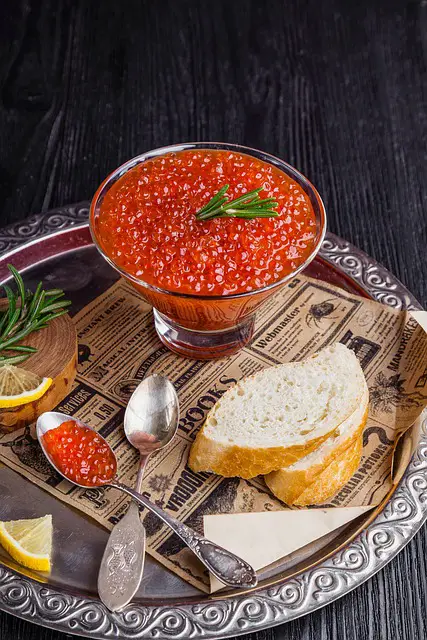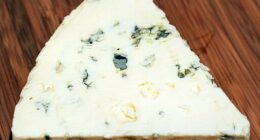Fish roe refers to the eggs of any fish, while caviar specifically refers to the eggs of sturgeon, a particular type of fish, often considered a delicacy.
TL;DR Fish roe Vs. Caviar
Fish roe is a general term used to describe the eggs of various species of fish. It can come in different sizes, colors, and textures depending on the type of fish it comes from. Fish roe is commonly used in sushi and other dishes for its unique flavor and texture.
Caviar refers specifically to the salt-cured eggs of sturgeon, a type of large prehistoric fish found primarily in the Caspian Sea and Black Sea regions. Caviar has long been regarded as a luxurious food item associated with wealth and indulgence.
What is Fish Roe?

Fish roe refers to the eggs or egg masses of various fish species. These tiny, delicate orbs come in a range of colors and sizes, depending on the type of fish they come from. Common examples include salmon roe, trout roe, and flying fish roe.
One notable characteristic of fish roe is its crunchy texture. The individual eggs pop in your mouth, releasing bursts of briny flavor that can be both savory and slightly sweet. This unique sensation adds a delightful dimension to dishes like sushi rolls, pasta sauces, or hors d’oeuvres.
Not only does fish roe offer a satisfying textural experience, but it also provides a good source of essential nutrients such as omega-3 fatty acids and protein. It’s no wonder that many cultures around the world have incorporated fish roe into their traditional cuisines for centuries.
When selecting fish roe for consumption, freshness is key. Look for glossy eggs that are free from any off odors or discoloration. Proper storage in the refrigerator will help maintain their quality until you’re ready to enjoy them.
What is Caviar?

Caviar is a highly prized delicacy that has been enjoyed for centuries. Caviar is the salted eggs of certain species of fish, most commonly from sturgeon. These eggs are known for their small size and distinct flavor.
To be considered true caviar, the eggs must come from one of the sturgeon species including Beluga, Osetra, and Sevruga. Each type of caviar varies in color and taste, with Beluga being the most sought after for its large size and buttery flavor.
The process of harvesting caviar involves carefully extracting the roe from mature female fish without damaging them. The eggs are then lightly salted to enhance their flavor and preserve them. This meticulous process adds to the exclusivity and high price tag associated with caviar.
Caviar is typically enjoyed by spooning a small amount onto a blini or toast point accompanied by traditional accompaniments such as sour cream or chopped red onions. Its rich taste makes it perfect for special occasions or as a luxurious treat.
Fish roe Vs. Caviar – Key Differences
| Aspect | Fish Roe | Caviar |
|---|---|---|
| Source | Eggs from various fish species | Eggs specifically from sturgeon fish |
| Type of Fish | Can come from different fish species, including salmon, trout, and more | Exclusively from sturgeon species, such as beluga, ossetra, or sevruga |
| Size and Color | Varies in size and color depending on the fish species; can range from small and colorful to larger and darker | Generally larger, ranging from small to large; typically ranges from black to shades of gray |
| Flavor and Texture | Flavor varies significantly based on the fish species; can be mild to strong; texture ranges from firm to delicate | Distinctive, often described as delicate, buttery, and slightly nutty in flavor; texture is usually firm |
| Culinary Use | Commonly used in a variety of dishes and sushi; often served as a garnish, in spreads, or as a topping | Considered a gourmet delicacy; traditionally served on its own, typically with minimal accompaniments like crackers or blini, to highlight its flavor |
| Price Range | Generally more affordable than caviar | Typically much more expensive due to its rarity and demand |
| Rarity and Luxury | Less rare and not typically considered as luxurious as caviar | Regarded as a luxury food item and associated with high-end dining and special occasions |
| Legal Regulations | Regulations regarding the harvesting and sale of fish roe vary by species and region | Strict regulations exist to protect sturgeon species and the quality of caviar; international trade restrictions are in place |
Image Credits
Featured Image By – svklimkin from Pixabay
Image 1 By –
Image 2 By – Дарья Яковлева from Pixabay








